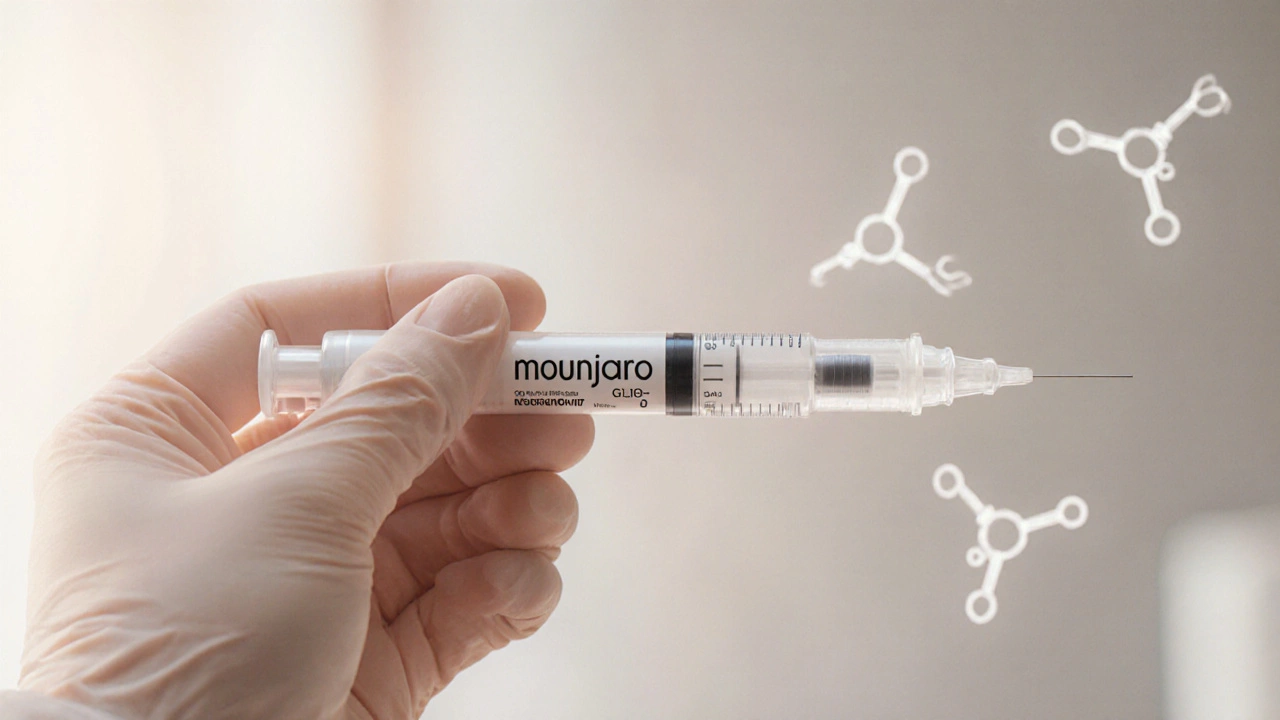Tirzepatide – The Fast‑Growing Diabetes and Weight‑Loss Medicine
If you’ve heard the buzz about tirzepatide lately, you’re probably wondering whether it’s a miracle pill or just another hype.
In simple terms, tirzepatide is a injectable medicine that targets two hormones – GLP‑1 and GIP – to help lower blood sugar and cut down appetite. It’s sold under the brand name Mounjaro in many countries and has quickly become a go‑to option for people with type 2 diabetes who also want to lose weight.
How Tirzepatide Works and Who Can Use It
Think of tirzepatide as a double‑action coach. First, it tells your pancreas to release more insulin when sugar spikes, which keeps blood glucose in check. Second, it signals the brain that you’re full, so you naturally eat less. This combo often leads to a 10‑15% drop in weight after a few months.
Ideal candidates are adults with type 2 diabetes who haven’t hit their targets with oral meds or who are looking for extra weight‑loss benefits. It’s not meant for type 1 diabetes, pregnancy, or severe kidney problems. Your doctor will check kidney function and screen for pancreatitis before starting.
Typical dosing begins with a small weekly shot – 2.5 mg – and ramps up every four weeks to a maximum of 15 mg, depending on how you tolerate it. The weekly schedule is handy; you pick a day and stick to it.
Real‑World Tips, Side Effects, and What to Watch Out For
Most people feel mild nausea, occasional vomiting, or a slight stomach ache when they first start. Those symptoms usually fade after a couple of weeks as your body adjusts. Staying hydrated, eating smaller meals, and avoiding greasy foods can help ease the upset.
Serious but rare side effects include pancreatitis, gallbladder issues, and severe allergic reactions. If you notice persistent upper‑abdominal pain, fever, or skin rash, call your doctor right away.
Cost can be a sticking point in India. Tirzepatide isn’t yet widely available in every pharmacy, and the price can run high. Some insurance plans cover it; others don’t. It’s worth checking with your provider or looking for patient‑assistance programs.
To get the most out of tirzepatide, pair it with a balanced diet and regular walks. You don’t need a drastic diet overhaul, but cutting down on sugary drinks and adding protein to meals can boost results.
Finally, keep regular follow‑ups. Your doctor will monitor blood sugar, weight, and any side effects every month for the first three months, then every three months after that. Adjustments to dose or switching meds are common, and open communication makes the process smoother.
Bottom line: tirzepatide offers a powerful tool for managing diabetes and shedding extra pounds, but it works best when you stay informed, stick to the dosing schedule, and watch for any warning signs.

Mounjaro for Weight Loss: Prescription Guidelines & Risks
Explore whether Mounjaro can be prescribed for weight loss, its dosing, benefits, risks, and how Indian clinics use it to help patients lose weight safely.

New Diabetes Drug Replacing Metformin: What You Need to Know
A major shift is happening in diabetes medication as new drugs step up to replace metformin. This article breaks down which drugs are leading the charge, how they work, and why some doctors now prefer them. You'll learn which patients could benefit most and what side effects to look out for. Get practical tips if you're considering a change in your diabetes treatment. Stay informed about what's coming next in diabetes care.




